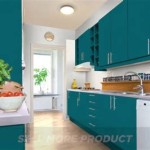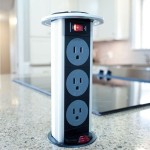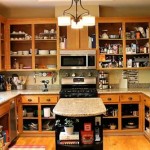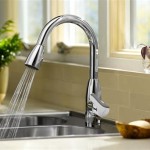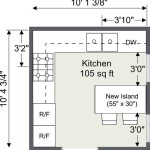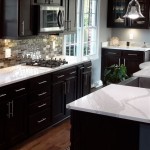Kitchen Cabinet and Wall Color Combinations: Creating a Harmonious Space
The kitchen is often referred to as the heart of the home, a space where families gather, meals are prepared, and memories are made. The aesthetics of this room play a significant role in creating a welcoming and functional environment. Choosing the right color palette for your kitchen cabinets and walls is crucial in achieving the desired ambiance and reflecting your personal style. This article will explore various cabinet and wall color combinations, providing insights into their impact and how to create a harmonious visual experience.
The Power of Color Psychology
Color psychology plays a crucial role in interior design, influencing emotions, perceptions, and even appetite. Understanding the psychological effects of different colors allows you to create a kitchen that aligns with your desired atmosphere. For instance, warm colors like yellow, orange, and red can evoke feelings of energy and warmth, making them ideal for kitchens where socializing and cooking are central. Conversely, cool colors such as blue and green tend to have a calming effect, promoting relaxation and creating a serene environment for meal preparation.
Classic and Timeless Combinations
Certain kitchen cabinet and wall color combinations have stood the test of time, remaining popular for their versatility and elegance. White cabinets paired with neutral walls, such as soft gray, beige, or light cream, create a clean and airy atmosphere. This combination is particularly well-suited for smaller kitchens, as it visually expands the space. Similarly, dark wood cabinets, such as walnut or cherry, can be paired with white or off-white walls for a sophisticated contrast. The combination of dark cabinets and neutral walls brings sophistication and depth to the kitchen, while white walls provide a sense of brightness and balance.
Adding Pops of Color
While classic neutral combinations are always a safe choice, incorporating pops of color can elevate the space and add personality. A bold accent wall behind the stove or sink can create a focal point, while colorful backsplash tiles can inject a touch of vibrancy. For instance, a white kitchen with navy blue cabinets can be further enhanced with a vibrant yellow or orange accent wall. The combination of navy cabinets, white walls, and a bold accent wall creates a sophisticated and energetic space. This approach allows for personalization without overwhelming the room.
Matching Cabinet and Wall Colors
While contrasting colors can be visually striking, matching cabinet and wall colors can create a more cohesive and streamlined appearance. This approach is particularly effective for smaller spaces, as matching colors create the illusion of depth and continuity. For example, a light gray kitchen with pale gray cabinets can create a tranquil and unified space. Similarly, a warm beige kitchen with beige cabinets can provide a sense of warmth and coziness. Matching cabinet and wall colors can also be a good choice for kitchens with limited natural light, as the continuous color flow helps to illuminate the room.
Choosing the Right Shade
When choosing colors for your kitchen, consider the natural light levels and the size of the space. Lighter shades will reflect light, making a small kitchen appear larger. Darker shades can absorb light, creating a cozy and intimate atmosphere in a larger kitchen. Additionally, consider the style of your home and your personal preferences. If you prefer a modern and minimalist look, opt for clean lines and neutral colors. For a traditional style, you can incorporate warm tones and intricate details. Ultimately, the best color combination is one that reflects your taste and creates a space that is both aesthetically pleasing and functional.
Tips for Creating a Balanced Kitchen
Here are a few additional tips to help you create a balanced and visually appealing kitchen:
- Use a color wheel to guide your color choices. Complementary colors, found opposite each other on the color wheel, create strong contrast. Analogous colors, found next to each other on the color wheel, create a harmonious and unified look.
- Consider the existing elements in your kitchen, such as countertops, backsplash, and flooring, when choosing cabinet and wall colors. The colors should complement each other, creating a cohesive and well-designed space.
- Sample colors before committing to a final decision. Paint swatches on different walls in your kitchen to see how the colors appear in different lighting conditions. This will help you ensure that the colors you choose work well together and enhance the overall atmosphere of your kitchen.

Two Color Kitchen Cabinets Ideas And Exact Paint Matches Painted Colors Cabinet Modern White

46 Best Kitchen Paint Color Ideas And Combinations For 2024

35 Kitchen Color Schemes For 2024 Cabinet Kings

Kitchen Cabinet Paint Ideas

14 Kitchen Cabinet Color Combinations To Try

31 Kitchen Color Ideas To Elevate Your Cabinetry Without A Full Remodel Architectural Digest

Kitchen Cabinet Color Palettes Premium Cabinets

How To Choose Kitchen Cabinet Paint Colors Hgtv

14 Kitchen Cabinet Color Combinations To Try

How To Choose The Right Paint Color For Your Kitchen Paintzen
See Also

